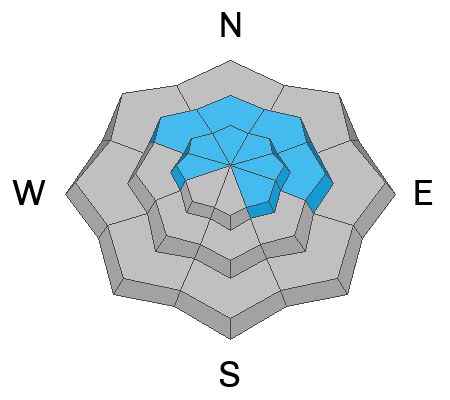We are very sorry to hear of the passing of Mike Jenkins yesterday evening. Mike had a huge influence on the Utah avalanche community, especially instrumental in Logan and Ogden. Among many other contributions, he founded the Bear River Avalanche Information Center, the original avalanche center in Logan. Our deepest condolences to his family, loved ones, and friends. He will be missed and well remembered by many in this community.

Our annual party and fundraiser is this evening in Logan at the Cache. 19th Annual Utah Avalanche Center Pray for Snow Party and Fundraiser information and tickets
HERE.
Join the Utah Avalanche Center and the Division of Outdoor Recreation to celebrate the Fourth Annual Avalanche Awareness week, from December 4 - December 11. Click
HERE to view the full list of events for the week. A few highlighted events for the Logan area:
- Join us Wednesday, December 7th at USU for a Know Before You Go. Find more info HERE.
- Join us Saturday, December 10th at Beaver Mountain for FREE UAC and USU Beacon Clinic. Find more info HERE.
Dangerous avalanche conditions exist in the backcountry. Last week's heavy snow and drifting overloaded many slope plague by buried weak layers and poor snow structure. Dangerous human-triggered avalanches remain likely on drifted upper and mid-elevation slopes. No new avalanches were reported since the weekend, but observers continue to report numerous audible collapses or "wumpfs" and shooting cracks from across the zone. Collapsing and cracking are red flags indicating unstable snow and real potential for dangerous slab avalanches failing on a buried persistent weak layer.
Today will be partly sunny in the mountains with high temperatures at 8500' around 20°F and 10 to 15 mph west winds. Tomorrow will be mostly sunny but cold. Cold weather will continue through the work week and it looks like another round of snow is coming together for the weekend.
this morning with light snowfall possible until noon with no additional accumulation expected. Skies will then become partly cloudy and temperatures will climb into the mid and upper 20s F, and winds will remain westerly averaging speeds of 10-20 mph, with gusts up to 30 mph at upper elevations.
No new avalanches were reported in the backcountry since a pretty active weekend, with several remotely triggered and some large natural avalanches reported.
On Saturday we could see this sizable recent natural avalanche under where the Grandfather Cornice forms on Cornice Ridge....
***See our updated list of observed avalanches from across Utah
HERE 









